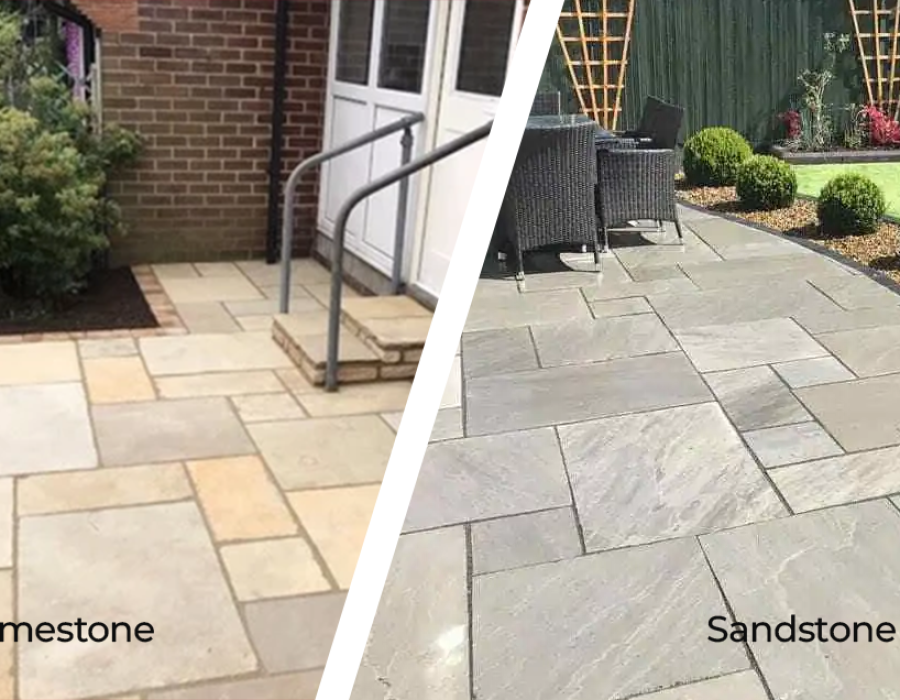Limestone and sandstone are two of the most popular natural stones used in construction and landscaping. Their timeless beauty, durability, and versatility make them excellent choices for a wide range of applications. However, these stones have distinct characteristics and features that can significantly impact your project's outcome. In this article, we will explore the differences between limestone and sandstone, helping you make an informed decision when choosing the right stone for your next project.
Composition and Formation:
Limestone and sandstone are both sedimentary rocks, but their formation processes and mineral compositions differ:
Limestone:
Limestone is primarily composed of calcium carbonate (CaCO3) and is often formed from the accumulation of organic marine sediments, such as shells and coral. Over millions of years, these sediments compress and solidify to create limestone.
Sandstone:
Sandstone is composed of sand-sized grains of mineral, rock, or organic material, cemented together by minerals like silica, calcium carbonate, or iron oxide. It is often formed from ancient sand dunes and riverbeds.
Appearance and Color:
One of the most noticeable differences between limestone and sandstone is their appearance:
Limestone:
Limestone has a smooth, granular texture and can vary in color from creamy white to light gray, beige, or even light brown. It often features small fossils and shell fragments, adding unique character to the stone.
Sandstone:
Sandstone is characterized by its coarser texture and can be found in a broader spectrum of colors, including red, yellow, brown, gray, and green. The grains of sand within sandstone give it a distinctive, rougher appearance.
Durability and Strength:
The durability and strength of limestone and sandstone can vary depending on their specific composition and where they are sourced:
Limestone:
Limestone is generally less dense and softer than sandstone. It can be susceptible to weathering, particularly when exposed to acidic or corrosive elements. However, some varieties of limestone are more durable than others.
Sandstone:
Sandstone is known for its durability and resistance to weathering. It is often used in outdoor applications like paving and cladding due to its ability to withstand the elements. However, like limestone, the strength of sandstone can vary among different types.
Applications:
The choice between limestone and sandstone can greatly influence the success of your project. Here are some common applications for each stone:
Limestone Applications:
Flooring and tiles: Limestone's elegant and polished appearance makes it a popular choice for indoor and outdoor flooring.
Countertops: Limestone countertops add a touch of sophistication to kitchens and bathrooms.
Facades and cladding: Limestone is often used for building exteriors, providing a timeless and classic look.
Fireplace surrounds: Limestone surrounds create a warm and inviting focal point for fireplaces.
Sandstone Applications:
Paving and walkways: Sandstone is a durable choice for pathways, patios, and driveways, with its rough texture providing good traction.
Garden walls and landscaping: Sandstone's rustic appearance works well in landscaping projects, such as retaining walls, garden edging, and decorative boulders.
Building facades: Sandstone is a common choice for historic buildings and architectural details, adding character and charm.
Carving and sculpture: The fine grain of sandstone makes it an ideal medium for intricate carvings and sculptures.
Maintenance and Care:
Proper maintenance and care are essential to keep both limestone and sandstone looking their best:
Limestone Maintenance:
Regular cleaning with mild, pH-neutral soaps or stone-specific cleaning products is crucial to prevent stains and maintain the stone's appearance.
Limestone should be sealed to protect it from moisture and staining, with resealing required periodically.
Sandstone Maintenance:
Sandstone is relatively low-maintenance but should still be cleaned regularly to prevent the buildup of dirt and grime.
Depending on the specific type and location of the sandstone, sealing may be recommended to provide added protection.
Cost Considerations:
The cost of limestone and sandstone can vary based on factors like the type, quality, and source of the stone. In general:
Limestone:
Limestone is often more expensive than sandstone due to its limited availability and the difficulty of quarrying and shaping the stone. However, prices can vary significantly depending on the specific limestone chosen.
Sandstone:
Sandstone is typically more budget-friendly than limestone, making it a popular choice for a wide range of projects. The cost of sandstone can be influenced by factors like color and rarity.
Environmental Impact
Both limestone and sandstone are considered environmentally friendly choices for building materials. They are natural, non-toxic, and durable, which means they have a relatively low environmental impact. However, it's important to consider the transportation costs when sourcing these stones, as they can be heavy and may need to be transported over long distances.
Conclusion
The choice between limestone and sandstone ultimately depends on your project's specific requirements and design goals. While limestone offers a timeless and elegant appearance, sandstone provides a more rustic and weather-resistant option. Careful consideration of factors like color, durability, and cost will help you make an informed decision. Whether you're looking to enhance your interior with elegant limestone tiles or create a durable outdoor space with sandstone pavers, both stones have their own unique charm and can contribute to stunning architectural and landscaping designs.
Stone Discover is one of the largest exporters and wholesale suppliers of tombstone monuments, natural stones and headstones in Europe, USA, the Middle East, and Africa. The company sources stones from India and is a brand of the "MPG Group," which has been in the natural stones business for over 30 years. Stone Discover is known for exporting high-quality stones, with a focus on quality and timely delivery at the most competitive prices.





Comments